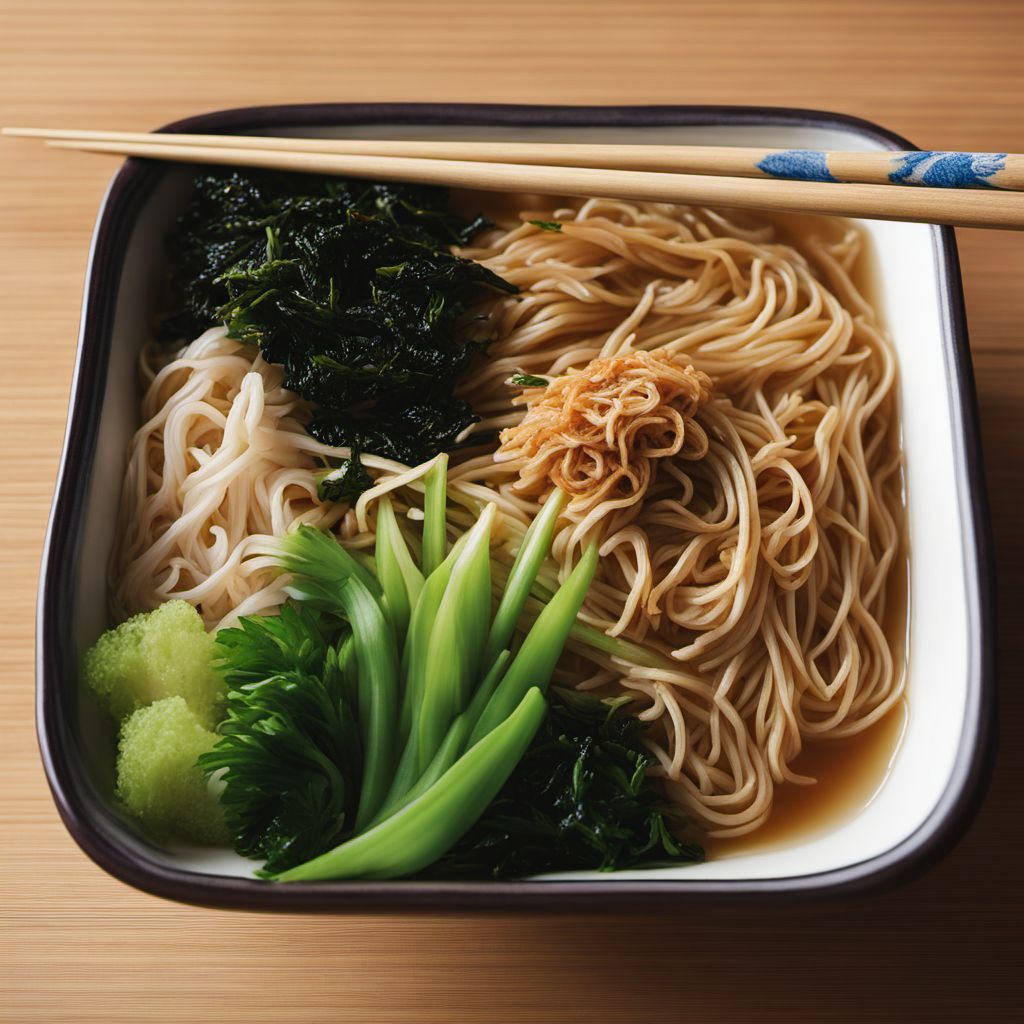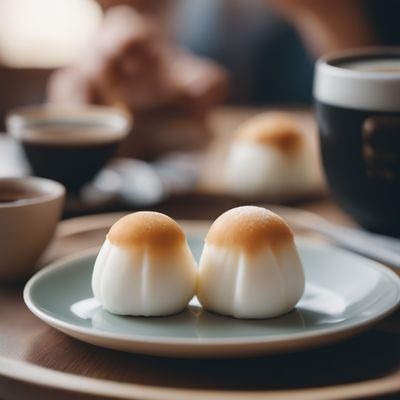
Recipe
Tsukemen - Savory Dipping Noodles
Umami Delight: Savory Dipping Noodles with Flavorful Broth
4.7 out of 5
Indulge in the rich and satisfying flavors of Tsukemen, a popular dish in Japanese cuisine. This recipe features thick, chewy noodles served with a delectable dipping broth, allowing you to savor each bite to the fullest.
Metadata
Preparation time
20 minutes
Cooking time
15 minutes
Total time
35 minutes
Yields
4 servings
Preparation difficulty
Medium
Suitable for
Pescatarian, Dairy-free, Nut-free, Low-fat, Low-calorie
Allergens
Soy, Wheat
Not suitable for
Vegan, Gluten-free, Keto, Paleo, High-protein
Ingredients
-
For the noodles: For the noodles:
-
300g (10.5 oz) ramen noodles 300g (10.5 oz) ramen noodles
-
Water, for boiling Water, for boiling
-
For the dipping broth: For the dipping broth:
-
2 cups (470ml) chicken or vegetable broth 2 cups (470ml) chicken or vegetable broth
-
1/4 cup (60ml) soy sauce 1/4 cup (60ml) soy sauce
-
2 tablespoons mirin 2 tablespoons mirin
-
1 tablespoon sake 1 tablespoon sake
-
1 tablespoon brown sugar 1 tablespoon brown sugar
-
1 teaspoon grated ginger 1 teaspoon grated ginger
-
2 cloves garlic, minced 2 cloves garlic, minced
-
1/2 teaspoon chili paste (optional) 1/2 teaspoon chili paste (optional)
-
For the toppings: For the toppings:
-
Sliced pork or chicken Sliced pork or chicken
-
Soft-boiled eggs Soft-boiled eggs
-
Green onions, chopped Green onions, chopped
-
Nori (seaweed), shredded Nori (seaweed), shredded
-
Bamboo shoots (menma) Bamboo shoots (menma)
Nutrition
- Calories (kcal / KJ): 380 kcal / 1590 KJ
- Fat (total, saturated): 6g, 1g
- Carbohydrates (total, sugars): 65g, 8g
- Protein: 15g
- Fiber: 3g
- Salt: 2.5g
Preparation
-
1.Cook the ramen noodles according to the package instructions. Drain and rinse with cold water to remove excess starch. Set aside.
-
2.In a saucepan, combine the chicken or vegetable broth, soy sauce, mirin, sake, brown sugar, grated ginger, minced garlic, and chili paste (if using). Bring the mixture to a simmer over medium heat and let it cook for 10-15 minutes to allow the flavors to meld together.
-
3.While the broth is simmering, prepare the toppings. Cook the sliced pork or chicken in a separate pan until cooked through. Soft-boil the eggs and peel them. Chop the green onions and shred the nori.
-
4.Once the broth is ready, strain it to remove any solids and transfer it to individual serving bowls.
-
5.To serve, divide the cooked ramen noodles into separate bowls. Arrange the sliced pork or chicken, soft-boiled eggs, green onions, nori, and bamboo shoots on top of the noodles.
-
6.Serve the bowls of noodles alongside the bowls of dipping broth. Dip the noodles into the broth and enjoy!
Treat your ingredients with care...
- Ramen noodles — Cook the noodles according to the package instructions, but make sure to slightly undercook them as they will continue to cook when dipped in the hot broth.
- Soft-boiled eggs — To achieve the perfect soft-boiled eggs, place them in boiling water for 6-7 minutes, then transfer them to an ice bath to stop the cooking process. This will result in a creamy yolk with a slightly runny center.
Tips & Tricks
- For an extra kick of heat, add a few drops of chili oil to the dipping broth.
- Customize your toppings by adding other ingredients such as corn, bean sprouts, or mushrooms.
- If you prefer a thicker dipping broth, you can add a cornstarch slurry (1 tablespoon cornstarch mixed with 2 tablespoons water) to the simmering broth and cook until thickened.
Serving advice
Serve the Tsukemen noodles and dipping broth in separate bowls. Encourage your guests to dip the noodles into the broth and enjoy the flavors. Provide chopsticks and spoons for easy eating.
Presentation advice
To enhance the presentation, arrange the toppings in an aesthetically pleasing manner on top of the noodles. Sprinkle some sesame seeds or drizzle a bit of sesame oil for an extra touch of elegance.
More recipes...
More Japanese cuisine dishes » Browse all

Coffee daifuku
Coffee daifuku is a Japanese sweet made with mochi and a coffee-flavored filling.

Gyutan
Beef tongue
Gyutan is a Japanese dish made with grilled beef tongue. It is a popular dish in the Tohoku region of Japan and is known for its rich and savory flavor.

Chirashizushi
Chirashi Sushi
Chirashizushi is a Japanese dish that consists of sushi rice topped with a variety of sashimi and other ingredients. It is often served in a bowl...





